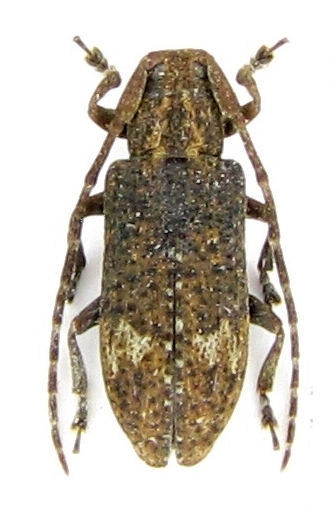| Author |
 Topic Topic  |
|
|
Vitali
Member Rosalia
  
Estonia
994 Posts |
 Posted - 25/06/2017 : 14:52:33 Posted - 25/06/2017 : 14:52:33



|

104.15 KB
There are several Pterolophia species with a similar pattern. I suspect this one to be Pterolophia rubricornis Gressitt, 1951, but of course cannot be sure. Any other idea?
Size 9 mm. |
Edited by - Xavier on 26/06/2017 19:30:06 |
|
|
Xavier
Scientific Collaborator
    
France
12213 Posts |
 Posted - 25/06/2017 : 18:27:13 Posted - 25/06/2017 : 18:27:13



|
| Any furrow on mid tibias ? |
 |
|
|
Vitali
Member Rosalia
  
Estonia
994 Posts |
 Posted - 25/06/2017 : 20:46:20 Posted - 25/06/2017 : 20:46:20



|
| Good that you asked, Xavier. I checked once more. Indeed, under some angle I could see a weak curvature filled with a brush of bristles. I did not notice it earlier. So, Ropica... and another tribus? |
 |
|
|
Xavier
Scientific Collaborator
    
France
12213 Posts |
 Posted - 25/06/2017 : 21:14:57 Posted - 25/06/2017 : 21:14:57



|
| Yes, it looks like a Ropica sp. |
 |
|
|
Xavier
Scientific Collaborator
    
France
12213 Posts |
 Posted - 26/06/2017 : 19:29:38 Posted - 26/06/2017 : 19:29:38



|
| To compare with holotype here of Ropica albomaculata Pic, 1945 , and specimens here. |
Edited by - Xavier on 26/06/2017 19:30:30 |
 |
|
|
Vitali
Member Rosalia
  
Estonia
994 Posts |
 Posted - 26/06/2017 : 21:37:36 Posted - 26/06/2017 : 21:37:36



|
There are many species with similar pattern: R. albomaculata, R. dorsalis, R. formosana, R. honesta, R. subnotata etc. Photos of several of these can be found in the internet. I am not sure.
My specimen has converging yellow stripes in pronotum and alternating white and dark spots in suture as the beetles here, but has a smaller depression in elytra. By the way, it also has a V shaped elevation in elytra base as your specimens of R. albomaculata
|
 |
|
| |
 Topic Topic  |
|


